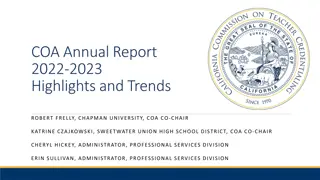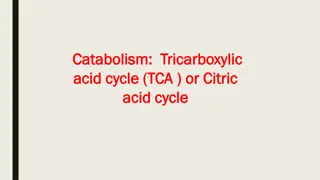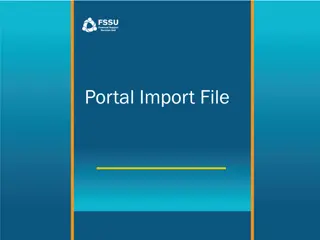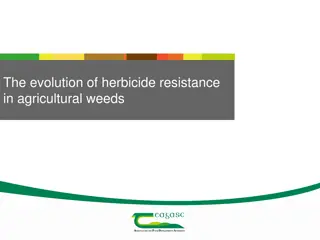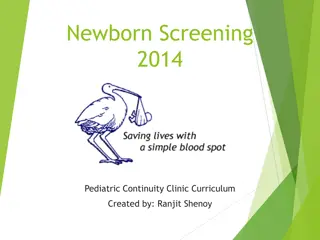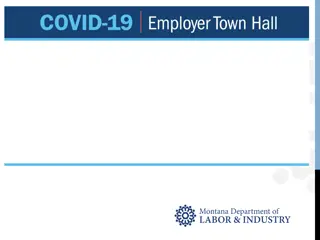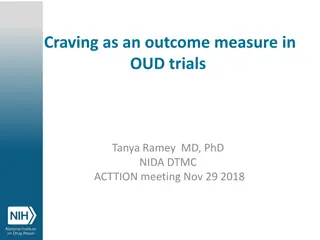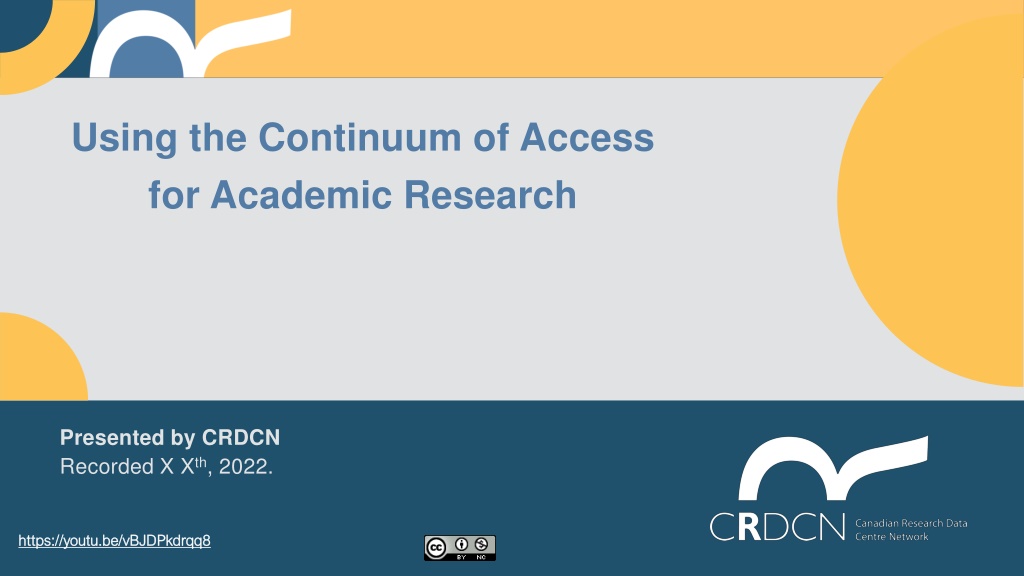
Replicating Academic Research: Using Continuum of Access
Explore the possibilities of replicating academic research using the Continuum of Access, including Public-use Microdata Files and Real-time Remote Access. Learn how to recreate population averages, odds ratios, and more from a research paper on dental care usage.
Download Presentation

Please find below an Image/Link to download the presentation.
The content on the website is provided AS IS for your information and personal use only. It may not be sold, licensed, or shared on other websites without obtaining consent from the author. If you encounter any issues during the download, it is possible that the publisher has removed the file from their server.
You are allowed to download the files provided on this website for personal or commercial use, subject to the condition that they are used lawfully. All files are the property of their respective owners.
The content on the website is provided AS IS for your information and personal use only. It may not be sold, licensed, or shared on other websites without obtaining consent from the author.
E N D
Presentation Transcript
Using the Continuum of Access for Academic Research Presented by CRDCN Recorded X Xth, 2022. https://youtu.be/vBJDPkdrqq8 https://youtu.be/vBJDPkdrqq8
Continuum of access Public-use Microdata Files (PUMF) Real-time Remote Access (RTRA) Research Data Centre (RDC) masterfiles At Canadian Universities
Can I replicate a paper? Replicate an analysis from inside the RDC, how far can I go with each source? In the paper, we have: Population averages for the sample Unadjusted odds ratio Adjusted odds ratio Mehra, V. M., Costanian, C., Khanna, S., & Tamim, H. (2019). Dental care use by immigrant Canadians in Ontario: a cross-sectional analysis of the 2014 Canadian Community Health Survey (CCHS). BMC oral health, 19(1), 1-9.
So what can be recreated? Section of Paper Section of Paper Example Example RDC RDC DATA DATA Yes RTRA DATA RTRA DATA PUMF DATA PUMF DATA Summary Statistics What proportion of the sample is female? How many men have poor dental care relative to women Yes Not as in the paper, but quite similar Not as in the paper, but quite similar Unadjusted Odds- ratios Yes Technically yes, but very very awkward, bad estimate of the confidence interval No regressions inside of RTRA Adjusted Odds- ratios How many men have poor dental care relative to women conditional on income, marital status etc. Yes Not as in the paper, but quite similar
So what can be recreated? Section of Paper Section of Paper Example Example RDC RDC DATA DATA Yes RTRA DATA RTRA DATA PUMF DATA PUMF DATA Summary Statistics What proportion of the sample is female? How many men have poor dental care relative to women Yes Not as in the paper, but quite similar Not as in the paper, but quite similar Unadjusted Odds- ratios Yes Technically yes, but very very awkward, bad estimate of the confidence interval No regressions inside of RTRA Adjusted Odds- ratios How many men have poor dental care relative to women conditional on income, marital status etc. Yes Not as in the paper, but quite similar
So what can be recreated? Section of Paper Section of Paper Example Example RDC RDC DATA DATA Yes RTRA DATA RTRA DATA PUMF DATA PUMF DATA Summary Statistics What proportion of the sample is female? How many men have poor dental care relative to women Yes Not as in the paper, but quite similar Not as in the paper, but quite similar Unadjusted Odds- ratios Yes Technically yes, but very very awkward, bad estimate of the confidence interval No regressions inside of RTRA Adjusted Odds- ratios How many men have poor dental care relative to women conditional on income, marital status etc. Yes Not as in the paper, but quite similar
RTRA With the adjusted odds ratios no With the unadjusted, yes, but awkward and standard errors wrong ? ? ? The summary statistics can absolutely be done, this is what RTRA is for! Also: For all the variables, I can use the variables as defined in the original article. Rounding and weights no. ?
So what can be recreated? Section of Paper Section of Paper Example Example RDC RDC DATA DATA Yes RTRA DATA RTRA DATA PUMF DATA PUMF DATA Summary Statistics What proportion of the sample is female? How many men have poor dental care relative to women Yes Not as in the paper, but quite similar Not as in the paper, but quite similar Unadjusted Odds- ratios Yes Technically yes, but very very awkward, bad estimate of the confidence interval No regressions inside of RTRA Adjusted Odds- ratios How many men have poor dental care relative to women conditional on income, marital status etc. Yes Not as in the paper, but quite similar
PUMF Variables vs. Masterfile Variable Variable Household income ($) Years since immigration Age in years Original Article Definition Original Article Definition <30,000; 30-99,999; 100,000+ <10 years; 10-20 years; >20 years <18; 18-34; 35-54; 55+ PUMF closest match PUMF closest match <20,000; 20,000-79,999; 80,000+ <10 years; 10+ years Can do, but only a coincidence
Comparing results Dental visits outcome Statistic ( sample proportion) Statistic ( sample proportion) Original paper (RDC) Original paper (RDC) RTRA statistic RTRA statistic PUMF statistic PUMF statistic Immigration Years since immigration <10 22.1% 22.1% 21.9% Years since immigration 10-20 24.2% 24.2% 78.1% Years since immigration 20+ 53.8% 53.8% Sex - Male 49.1% 49.3% 49.3% *Original paper does not provide confidence intervals for proportions
Comparing results Dental visits outcome Statistic (unadjusted odds ratio) Statistic (unadjusted odds ratio) Original paper (RDC) Original paper (RDC) RTRA statistic RTRA statistic PUMF statistic PUMF statistic Immigration Years since immigration <10 1.90 (1.40-2.57) 1.89 (1.61-2.23) 1.84 (1.35-2.52) Years since immigration 10-20 1.12 (0.84-1.50) 1.12 (0.95-1.32) 1 Years since immigration 20+ 1.0 1.0 Sex - Male 1.40 (1.10-1.79) 1.41 (1.23-1.61) 1.40 (1.09-1.82) *RTRA CI are not accurate, estimates based on total _N from CCHS
Comparing results Dental visits outcome Statistic (adjusted odds ratio) Statistic (adjusted odds ratio) Original paper (RDC) Original paper (RDC) RTRA statistic RTRA statistic PUMF statistic PUMF statistic Immigration Years since immigration <10 1.51 (0.94-2.41) NA 1.73 (1.16-2.58) Years since immigration 10-20 1.23 (0.83-1.84) NA 1 Years since immigration 20+ 1.0 NA Sex - Male 1.84 (1.35-2.51) NA 1.79 (1.34-2.40) -Dental insurance control not in this model -Income controls had to be redefined
Using the continuum for academic research RTRA isn t really useable for typical data-analysis research paper Without capacity for regression, the analysis generally won t be of sufficient depth/quality for publication Could be useful for framing qualitative work PUMFs can and have been used for data-analysis research paper This paper might have been published if they had analyzed the PUMF The quality of the analysis is better with the RDC and lots of topics can t be studied with Public-Use data
Using the continuum for academic research RTRA isn t really useable for typical data-driven research paper Without capacity for regression, the analysis generally won t be of sufficient depth/quality for publication RTRA can be very useful in other situations Contextual background for qualitative empirical work Understanding whether you have something before starting a data-driven paper Cases where there s no availability of public use files (especially as admin data start becoming more available)
Using the continuum for academic research Sample paper probably would have been publishable without going into the RDC Minimal loss of resolution in variables All variables needed are available Variables are binned even when continuous But this isn t normally the case Not possible to investigate the same outcomes for off-reserve indigenous population, for example. Different statistical procedures likely off the table E.g. Income gradient
Get started Speak with your university librarian or data librarian Visit the CRDCN website Visit the StatCan website




